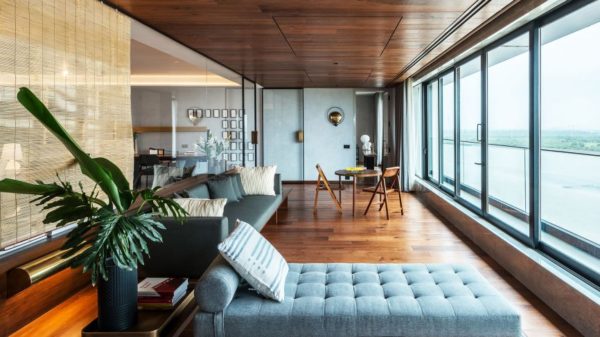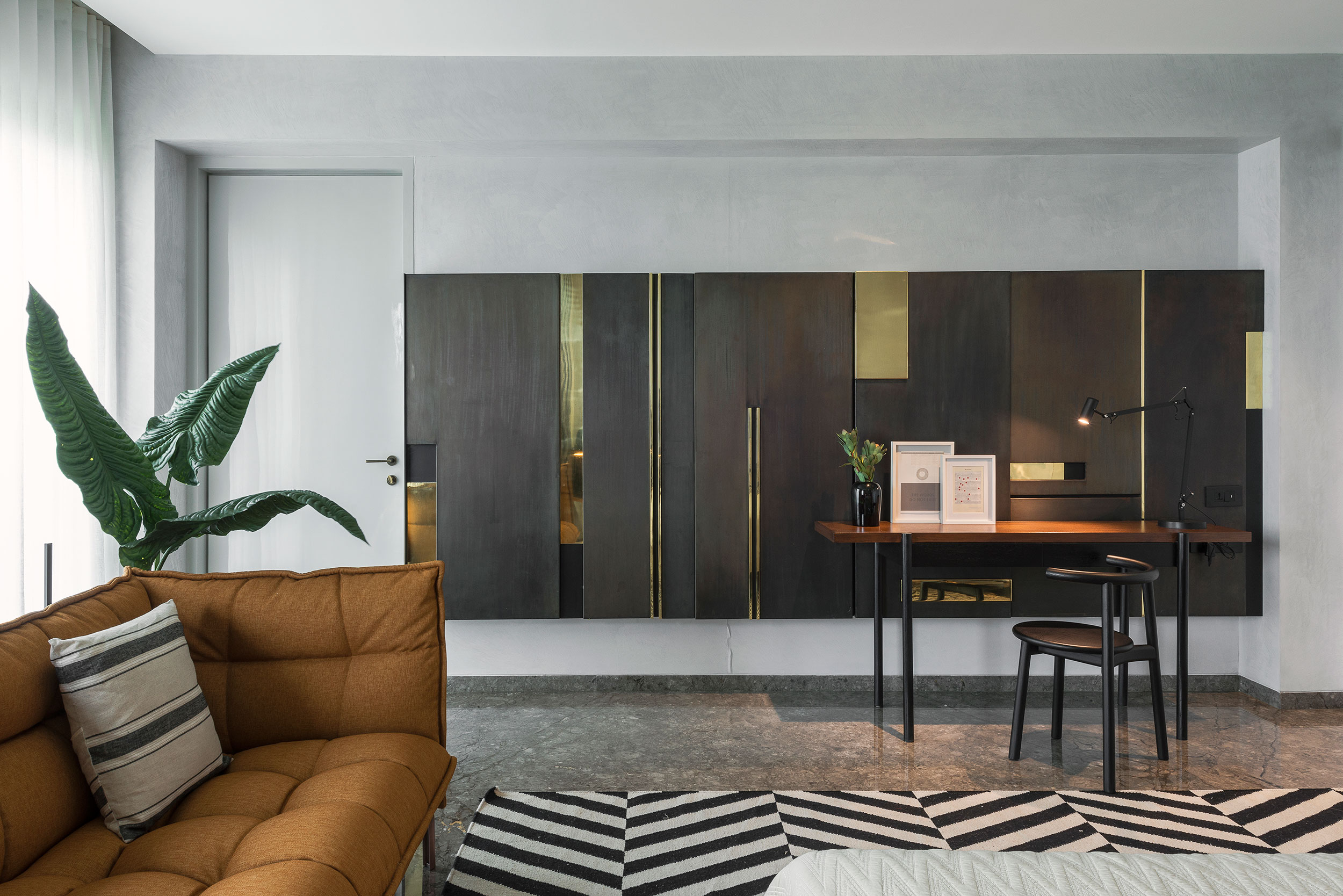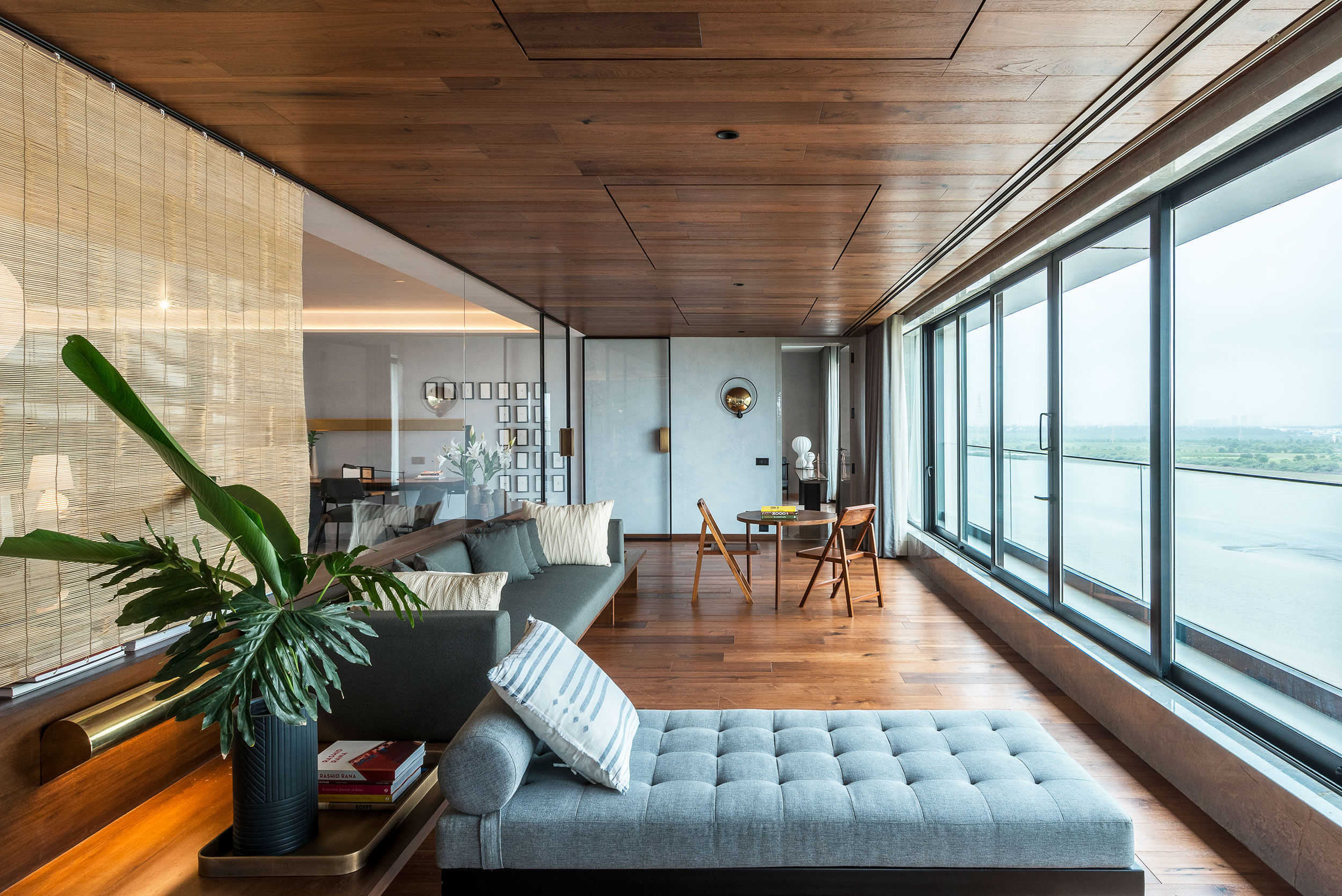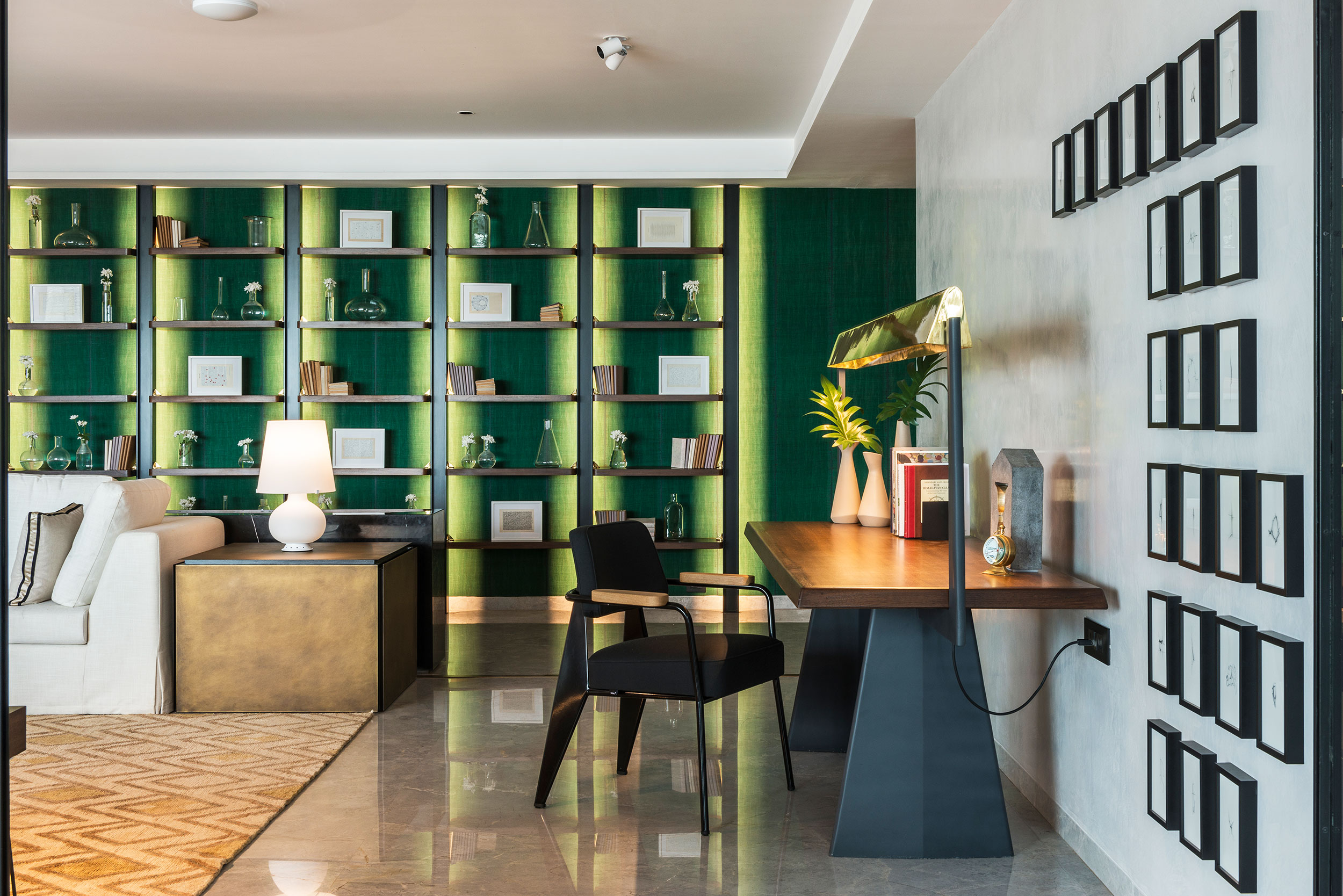
The views of the calm, meditative river govern the design of this tranquil home
There’s a myth around the Tapti in Surat. As the river flows steadily from the Gawilgarh Hills of the Deccan plateau, it carries with it ancient folklores and myths. Tapti, they say, was once the Hindu goddess created by the Sun God to save himself from intense heat. Today, hundreds of devotees are drawn by the revitalising aura of the river. So a few years ago, when Rajiv Saini, one of Mumbai’s most sought-after designers, came across a property on the lush banks of this river, he knew the house had to speak to this crucial element of nature. “The river became the highlight of the apartment, and we planned the spaces so that the owners would maximise their time facing the river bank,” says Saini.
In this private Surat apartment, which spans 4,500-square-feet, the blue of the Tapti washes in, engulfing the space in its calm and quiet. Shadows dance on the walls as the sun plays hide-and-seek on the water surface. After all, a home is—as Saini believes—more than just a refuge, or a place to sleep in. “It is meant to be an experience,” he says. And so, Saini put his friendship with Samir Mehta, a businessman who resides in Mumbai, on the forefront, and created a sanctuary—far from the madding crowd.

A Home Away From Home
Saini had first designed a home for Mehta in Mumbai—a 6,000-square-foot Malabar Hill apartment that brought together Mehta’s familial legacy and Saini’s contemporary touches. Since Surat is Mehta’s hometown, he wanted to have a family home for his parents and children—the apartment resonates with the designer’s modern touch, yet retains the earthiness of a home away from home. It is here that Saini revisited his brotherly bond with Mehta, and transported the inhabitants to an ethereal setting—all with a creative reign that saw no boundaries or limitations. “The basic floor was already laid. And then Samir bhai said, ‘Just do what you want.’ That kind of gave us the carte blanche to do exactly that,” says Saini.

A Second Dwelling
Saini knew what he wanted the moment he set his eyes on the apartment. The house was already defined by its structure, and the designer didn’t want to do much in terms of altering its structural skeleton. What he knew, though, was that the space is its strongest in its openness. The river allowed him to play around with different nuances of light and air. “You’re on the bank of the river, and beyond that are just endless swathes of plains. You can’t see anything. It kind of gives you that vibe of a resort,” he says. The space has two bedrooms and the main living room that overlooks the open wilderness, while two others along with the kitchen and dining areas overlook the city. And to balance out this family home, Saini decided to go for the “visually light and a bit of fun”.
And so, even though the space was meant to be a “second home” for the Mehtas, Saini created a perceptive mood board that draws from the serenity of a sanctuary, and the dynamism of modern design. True to his aesthetics, the house has several reminders of Saini’s golden touch, one that comes with minimalism, attention to craft, sprinkling of edgy contemporary art, and, of course, the warmth of a personal touch. “Earlier, Samir bhai wanted one of those quick, get-done-with-it jobs, but when we worked together for the Mumbai house, he realised that we could do so much more with it,” says Saini. The Surat house, hence, is reminiscent of their city house in a lot of ways. What stands apart is how the space responds to its immediate surroundings. The result: a sophisticated canvas that exudes precision and freedom, all in the same breath.

The Living Quarters
With four bedrooms, a kitchen, dining, a living space and a verandah, the apartment brings together an aesthetic cadence of elegance and nuance. The river, of course, determines the space. “It really opened up the apartment,” says Saini. Which is why, the living room becomes the epicentre, which is placed right next to the verandah and gives a stunning as well as wide-angle view of the horizon through the glass partition. “This is where we decided to make the main family room, with the daybed and the little round table. This is where the family spends their time, and frequently has their meals,” says Saini.
Beyond the living area comes the dining area, in which the single-piece timber dining table plays accomplice to the brushed stainless steel of the kitchen, both of which are separated by a minimalist glass-and-steel separator. This semi-open plan allows the two rooms to merge and separate at will, allowing the residents to experiment with the setting. “This was also done as part of the opening up of the space that I was telling you about,” says Saini.
Furniture and Accessories
If there’s one thing Saini swears by, it’s attention to detail. In design, that translates to his penchant for precision and customisation while adding nuance to a space. In the Surat home, we encounter the pursuit of culture and tradition, which speaks of Saini’s love for contemporary art and crafts, and Mehta’s affinity for style. These aspects show up in various ways.
Statement furniture (such as the desk and chair in the living area) add a touch of minimalism to the space, with pieces by iconic designers such as Jean Prouve, Ilmari Tapiovaara, Pierre Jeanneret. But in one swift, fluid stroke, Saini also introduces rustic craft into the setting, with the gadda mattress on a low-raised wooden platform, or rice paper, the daris (traditional Indian floor mat) or the chic blinds (which are traditionally used in Indian homes as a reprieve from the summer heat). “Some things were custom made, while some were bought from Mumbai. The idea was to make it relaxed and informal,” says Saini. The colour palette across the rooms are earthy tones—calming whites to forest green, to pastel blues—that casually flirt with bold lines of blacks, browns and dark blues.

ALSO READ:
From ceramics, paintings to installations, all find pride of place in this Delhi home




